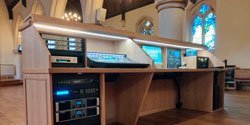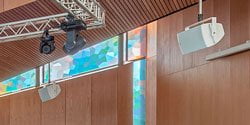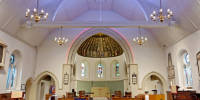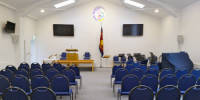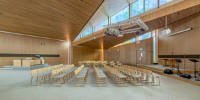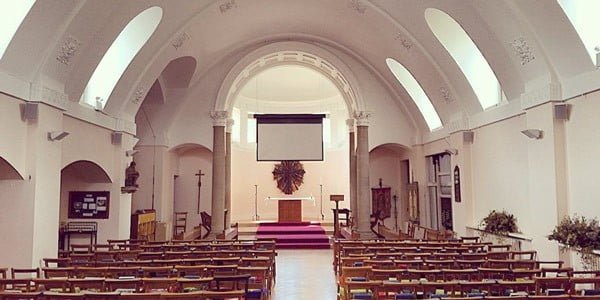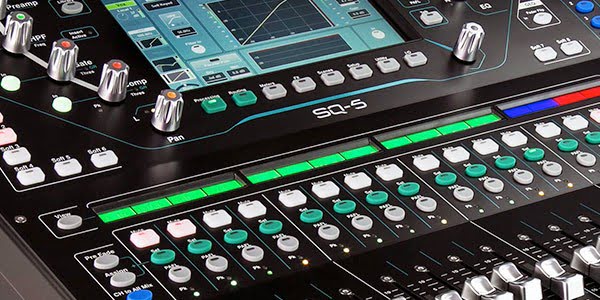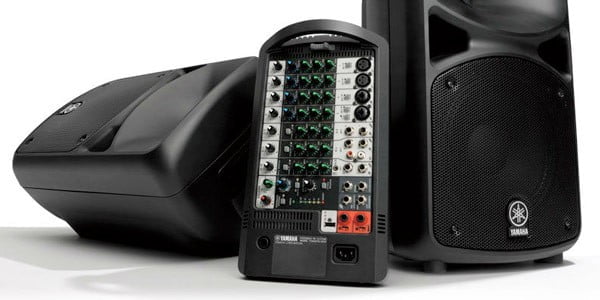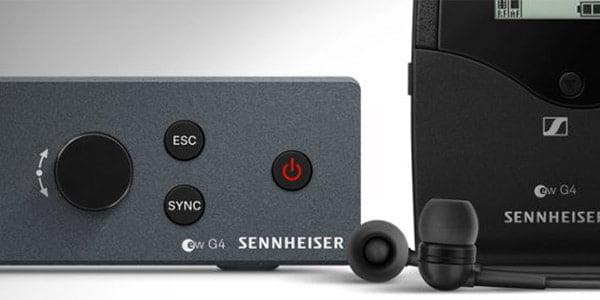
In a time of global pandemic, where all church buildings in the UK have been closed during lockdown, we’ve all had to find a new way to do church. Whether via Zoom, through Facebook or YouTube, live streamed, pre-recorded or podcast, churches have been piecing it and sometimes cobbling it together to do things …digitally.
Since the beginning of March 2020, you won't be surprised to hear, we’ve seen a huge increase in churches asking, ‘How do we live-stream our services?’. In fact, we produced a DM Quick Expert Guide to answer this question back in April.
Asking ‘how?’, as it turns out, is not the only question you’ll need to consider, and it may not be the best place to start…
A Digital Church?
As we look ahead to returning to our church buildings, many of us are realising it’s not going to look the same as it did before, certainly not in the short to medium term. Social distancing measures and guidelines that prevent singing, sharing bread & wine, passing around hymn-books, Bibles, refreshments and more, mean our shared experience of church looks rather different, possibly for some time to come.
Most churches will find that their seating capacities are reduced to 25% at best. And even with some of these measures relaxed, it will take time for everyone to feel like it’s okay to return to the church building, particularly for those more vulnerable in our congregations.
However, many churches have also come to realise the benefits ‘digital church’ has brought during this period, including: wider engagement with congregation, families, friends and local communities; even greater communication outside of Sundays, through social media, group chats, video calls etc; easier access to meetings, prayer groups, Alpha, as well as shared church resources online and other churches' services - the list goes on.
None of these things are necessarily new, and many churches are already using these tools, but not previously in these numbers and with such enthusiastic and wide demand.
Bridging the Gap
As we begin to go back to meeting in our church buildings, how do we balance this potential divide between an ‘in-person congregation’ and an ‘online congregation’, as well as looking to maintain and possibly develop the opportunities for ‘Digital Church’? For many, the first thought is to move from the shared experience of a 'living-room' curated online Sunday Service, to a livestream of the service in church. This provides the most efficient way to meet the needs of in-person and online congregations and avoids placing an even greater demand on our Ministry & Clergy Teams.
However, what was relatively easy and relaxed on a laptop in the living room is now a lot more complex to deliver from the church building. Added to this is a sense of urgency to get a streaming solution up and running as soon as possible so we can ‘bridge the gap’ between those attending a service in person and those watching at home.
It is often at this point in the conversation that most churches start asking the question ‘How do we stream!?’
When we then look at the myriad of streaming products and software options available, it quickly becomes apparent that the mechanics of how we stream can only be answered fully when we know:
- Who are we streaming to
- What we want to stream
- Why we're streaming in the first place
Who are you streaming to?
Or put another way, who is your audience? Sounds easy, right? Surely the answer is just all the congregation at home, the ones who’ve been watching the minister or worship team in their front rooms for the last couple of months. But what about when all of our online congregation is back in church?
Engaging with a church through the anonymity of a browser window is of course an easier first step. And also, perhaps more significantly, allows someone to cross a 'virtual threshold' in to your church.
Maybe you’ve been encouraged by the number of people watching your lockdown services. Many have told us they’ve seen higher numbers than would normally attend in-person and been surprised at who's watching based on the message they've received and comments on social media. We've heard stories of friends and family and those on the margins of congregations who have found this form of church more accessible. Engaging with a church through the anonymity of a browser window is, of course, an easier first step. And also, perhaps more significantly, allows someone to cross a 'virtual threshold' into your church.
Streaming your service will begin to be not just about reaching your congregation, but reaching a much wider community, forming part of your outreach. Knowing who you are streaming to and who your audience is will inform what you want to stream to them.
What are you streaming?
What is it that your online congregation has enjoyed about the way you’ve produced your digital church? There are likely lots of different aspects, and perhaps across different platforms and not just on Sundays. But consider for a moment the style in which your main service may have been delivered.
For most of us, the content of our stream or pre-recorded Sunday Service has been specifically created for our congregation watching at home. It’s very likely been from inside someone's home; the living room, kitchen or study. It’s been personal, relaxed and intimate in style and delivered directly and closely to camera.
If this direct, personal, friendly style has worked for your church, you may like to consider how you can replicate as much of this as possible when you move to live streaming from your church building. A simple, single-camera streaming system showing a wide, distant shot of the front of the church, coupled with reverberant audio, will present a very different 'style’ of church to what your audience may have been used to.
Remember that creating a style for your weekly Sunday service stream may take time to develop. For continuity and to keep some of the familiar style you have been using during lockdown, you may like to pre-record small segments from home that appear at the beginning or end of your live stream from church. If you've been using Zoom, you may like to consider keeping this interaction, perhaps after the service when at home or even at the end of the service via a screen in an area where you would normally serve refreshments. We've written more on using Zoom here.
Practical points to consider:
Developing the style of your live stream will take time and likely evolve. But bear in mind that adding more than one camera, or separate feeds in from an AV system with song words, Bible passages, PowerPoint, etc, will require you to mix and produce these things live. That means you need to find someone (or likely some people) to operate the equipment each week. You may also need to find them somewhere to operate from!
If you want your stream (or previously recorded streams) linked or embedded on your church website, you'll need to be in contact with the person or people who look after the site.
Don't rush into streaming, look to build on the elements you may already have. Aim to develop your style, operators and equipment as the ministry grows.
Why are we live streaming?
If you’ve read this far, then I suspect you may already have a good idea about why you want to live stream, the benefits for your church, and the potential importance for your ministry. But is everyone on the same page?
It is a good idea for your church to set out, or at least discuss, the purpose of why you are live streaming, who it is for, and what you hope to achieve by doing it.
Here are some of the reasons that you might want to live stream your church services:
- Reaching congregation members during pandemics!
- Allowing access for those who are unwell, injured, too elderly to make it in person, or have a disability that makes it difficult to travel.
- For those who are travelling or on holiday and want to continue to participate remotely.
- For students or those who work away from home for longer periods, who want to remain connected.
- For congregation members who have moved away and want to stay in touch.
- To give easier access to the church for those who find it difficult to 'cross the threshold'.
- To extend your reach beyond your local community and help people connect with one another.
- Recording your live streams and making them available as 'video on demand', allowing people who missed the live event to watch it later when they can.
- Recorded live streams allow people to connect throughout the week. Church is not just for Sunday.
- For special events or concerts.
- Running courses or training sessions.
- To engage with your local community.
- For outreach, as part of your mission - to be digital missionaries.
- To grow your church and build community.
But how do we do it?
Knowing who your audience is, what you want to communicate, and why you want to present it, will inform how you then go about live-streaming your church service.
Selecting the right products and finding the right solution for your church can be difficult to navigate (that's where we can help). Remember that these are the tools to deliver the message, and the better the tools, the easier the job. But they are just tools; the most important part is the message.
Take a look at our "Live Streaming Your Church Service" Quick Expert Guide to see an overview of how live streaming works, the products and software involved and some example systems and costs. And of course, get in contact with us directly for a bespoke solution that fits your requirement.


